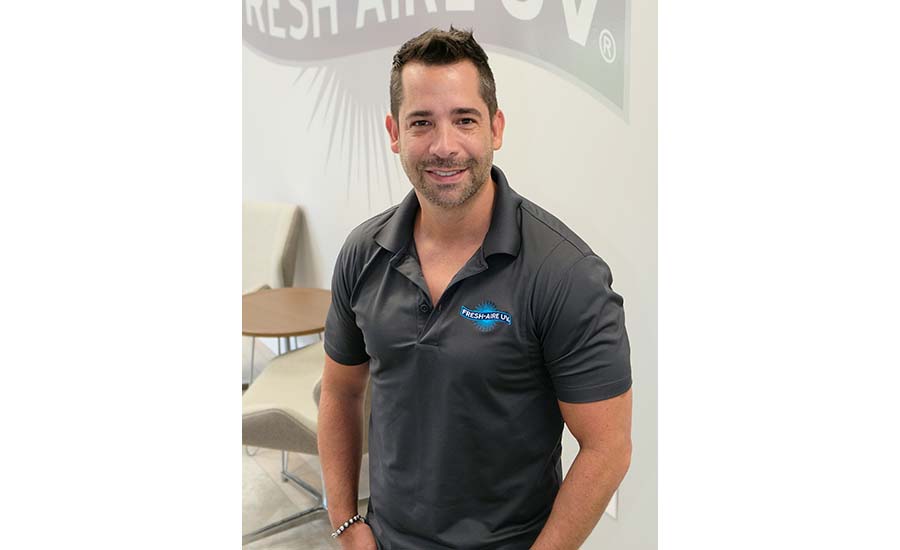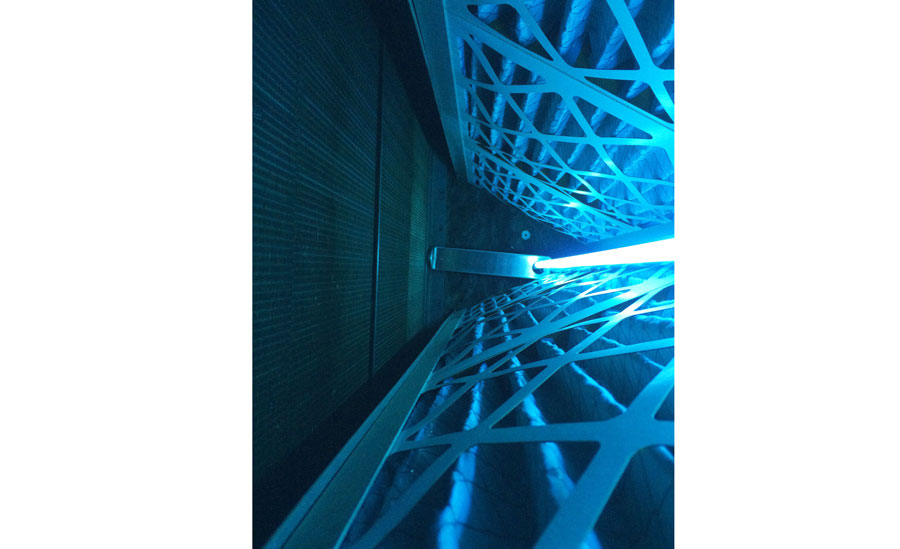UV Lights Prevent Contamination in Cannabis grow facility owners and managers take painstaking measures to maintain their growing areas free of mold, mildew, fungus, and other biological contaminants. However, the air handler system supplying conditioned air can very well be generating and distributing airborne microbes throughout the building. These drastic consequences affect the cannabis plants’ viability, quality, and growth.
The dark, damp environments within the HVAC systems are known for generating and harboring biological contaminants, such as mold and fungus on cooling coils, within the unit enclosure’s interior surfaces and the condensate drain pan.
Consequently, biological contaminants are then distributed throughout the facility via the air handler ventilation and ductwork.
Furthermore, grow area mold and fungus can also be drawn into the unit via return air cycles and redistributed.
Grow facility managers are learning from the health care industry and installing ultraviolet germicidal irradiation (UVGI) light systems designed to be installed in HVAC systems.
Health care associated infections (HAI) have been caused by pathogens on high-touch surfaces or transmitted through the air within health care facilities for decades.
However, the health care industry has successfully applied UV technology, combating HAIs, and biological contaminants in general, with UV-C light systems mounted inside HVAC units and ductwork.
One medicinal marijuana cultivation facility, 5280 Weedery in Denver recently installed four UV-C lights on each of its two 1,250-square-foot flower room’s 12.5-ton air handling unit cooling coils. 5280 Weedery operates a 4,000-square-foot growing facility complete with a retail medical dispensing facility. Principal Cesar Vazquez III was inspired by the HVAC industry’s success in using UV-C to eliminate any potential of airborne mold or yeast. The UV-C is preventing any mold growth on coils and interiors of the units, according to Vazquez. He now plans on installing six in-duct UV-C light kits in the metal ductwork that distributes conditioned air into the facility.
UV-C light system lamps in grow facilities range from 15 to 60 inches long. They’re typically positioned a few inches from the downstream or wet side of the HVAC system’s coil, where they sterilize microbes 24 hours a day and discourage biological growth and accumulation. The UV-C light from coil-disinfection will also indirectly treat the interior HVAC unit surfaces and the drain pan, depending on its configuration.
Besides internal HVAC system components, the UV-C lamps also disinfect airstream biological contaminants as they pass through the UV field. Grow facilities can benefit from deactivating problematic mold and fungus because they contribute to many issues within a grow-op, such as powdery mildew.
Most grow-ops are programmed for a relatively high recirculation rate from the HVAC system. Every pass of air through the high-output UV-C array increases the disinfection rate. The UV systems will also deactivate airborne biological contaminants introduced from outside air.
Besides coil-mounted systems, some UV-C light system designs can treat both supply and return airflow with in-duct mounting. Airflow, in-duct lamps are positioned parallel to the duct run, which exposes pathogens to a longer disinfection dwell time as they pass through the UV-C field. Return air duct is preferred because of its slower air velocities, which result in increased dwell time.
UV-C lights mounted on coils also have energy-efficiency benefits. Virtually all evaporator coils suffer from biofilm, which creates friction and increased static pressure that causes the blower and HVAC system to work harder and less efficiently. The coil's heat transfer also decreases. Even a slight fouling of 1.5 thousandths of an inch of bio-film can have a dramatic efficiency loss. Conversely, clean coils can deliver an impressive 30 percent increase or more in cooling capacity when compared to dirty and fouled coils.
Publication date: 4/23/2018
Want more HVAC industry news and information? Join The NEWS on Facebook, Twitter, and LinkedIn today!

















